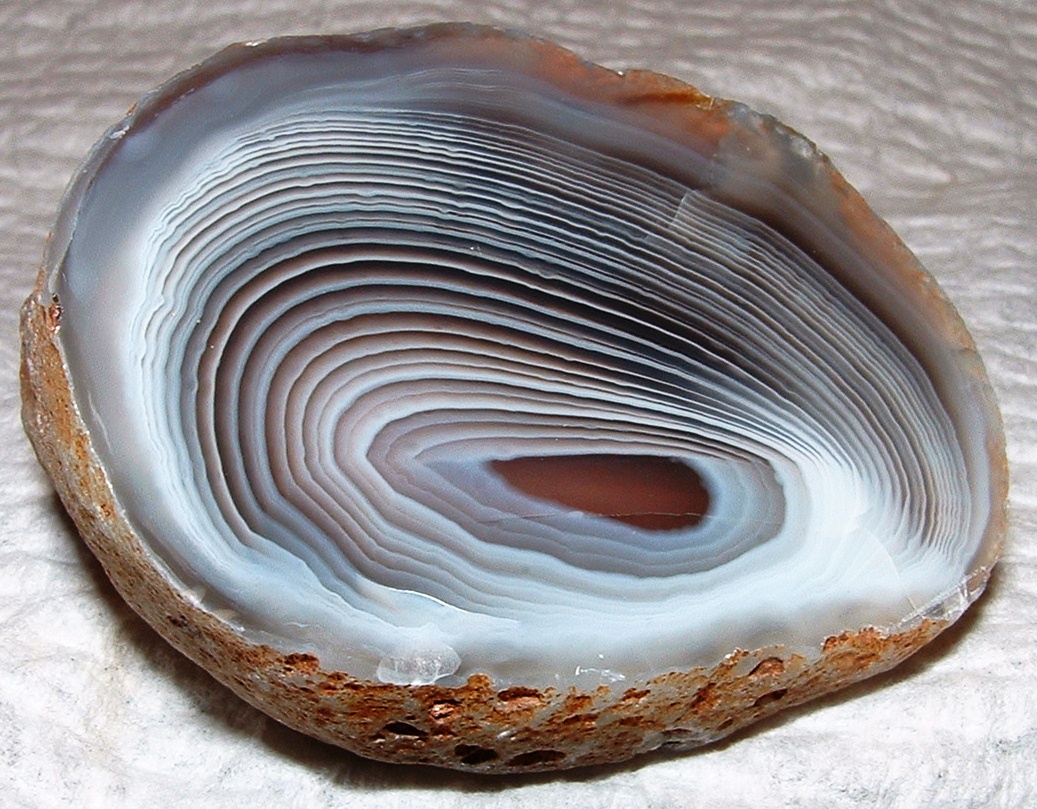| Gemstone: Crazy Lace Agate Birthstone Month: Agate is associated with the birthstone month of May. Zodiac: Agate is associated with the zodiac sign Gemini. Chemical Make-up: Agate is a Silicon Dioxide and is a variety of Chalcedony, which is a member of the Quartz family. It is scientifically classified as either a cryptocystalline or a microcrystalline Quartz. History & Lore:This variety of Agate has rightfully been given the name Crazy Lace Agate in reference to its many interesting curved and twisted bands. It is also referred to as Mexican Lace Agate as it is mined only in Mexico. Some of the earliest primitive tools that were created by man's ancestors 2.5 million years ago were made of various types of Quartz, including Agate. Agate has also been used as a gemstone and for other ornamental objects dating back thousands of years. Early Greeks used Agate in the form of amulets as protection from the dangerous elements of the sea. In medieval times Agate was worn to bring God's favor and make one agreeable and persuasive. It was also believed to bring protection from all dangers and to be able to bring about victory and strength. |
|
Agate has commonly been used to cure insomnia and to bring about pleasant dreams. It is also said to enhance the wearer's courage, improve perception and concentration, and to provide protection from dangers. Agate is believed to enhance trust and honesty, and to assist with acceptance to circumstances and emotions. In addition to this, Agate is believed to be able to improve memory. Crazy Lace Agate is said to energize and balance both the body and mind and can help the wearer reach high physical levels. It is also said to cure the mind of emotional pain. Availability: Crazy Lace Agate is somewhat rare but demand for this stone is by no means high, making the price tag rather modest. Sources: Crazy Lace Agate is mined in several areas of Northern Mexico in the Sierra Santa Lucia. Evaluation: Agate is rated at 6.5 to 7 on Moh's Scale of Hardness. Crazy Lace Agate is an opaque to translucent stone displaying a vast array of complex patterns and bands that twist and turn along the stone. In addition to its varied patterns/bands, Crazy Lace Agates creamy browns, tans, whites, golds, and occasional pinks create a truly unique gemstone. The price of the stone primarily depends on the carat weight and the beauty of the bands and patterns. Crazy Lace Agate found with distinctive or extraordinary patterns and at larger sizes will naturally demand a premium. |






















 November's gemstone, Citrine, is as warm as a Van Gogh painting of sunflowers. The name Citrine comes from an old French word, "citrin", meaning lemon. One of the more rare forms of quartz, this gemstone ranges in color from the palest yellow to a dark amber named Madeira because of its resemblance to the red wine.
November's gemstone, Citrine, is as warm as a Van Gogh painting of sunflowers. The name Citrine comes from an old French word, "citrin", meaning lemon. One of the more rare forms of quartz, this gemstone ranges in color from the palest yellow to a dark amber named Madeira because of its resemblance to the red wine.